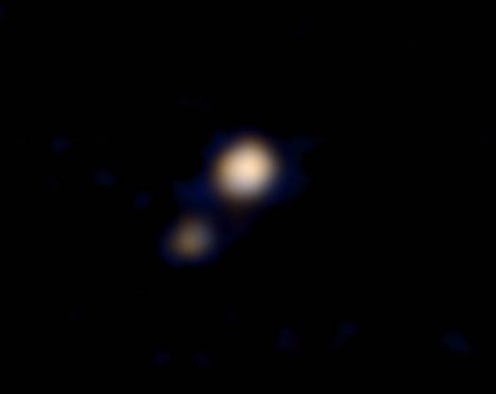News
Here's What Pluto Looks Like In Color

Your favorite is-it-isn't-it planet, Pluto, finally has its own self-portrait: After almost a decade of wandering through space, NASA's New Horizons spacecraft finally got close enough to Pluto — which was recently (informally) voted a planet again, FYI (even though it's technically still an "dwarf planet," according to NASA) — to take a photo of Pluto, albeit a pretty blurry one. In the photograph, you can see Pluto (the blob in the middle) and Pluto's largest moon, Charon.
And if that got you excited — and, well, if it didn't, because if you squint it could just as easily be two pieces of rice on a black plate — we're about to get a lot more Pluto action. New Horizons has been traveling for 3 billion miles, reports CNN, and it's about to zoom past Pluto in our closest look yet at the dwarf planet (which I guess is what we're going with, since that's what NASA's calling it now; Wikipedia, for clarity's sake, refers to it as an "object").
Writes NASA on its New Horizons fact-sheet:
The New Horizons mission will help us understand worlds at the edge of our solar system by making the first reconnaissance of the planet Pluto and by venturing deeper into the distant, mysterious Kuiper Belt – a relic of solar system formation.
You gotta give NASA credit for making space travel sound like a Vin Diesel movie. It even has its own Pluto countdown.
And its own Twitter account.
And sure, our first image of Pluto might not be the high-definition marvel we can expect from, say, our iPhone if we actually took a photo of two pieces of rice on a black plate, but bear in mind that this is three freaking billion miles from earth, and New Horizons has been on an epic journey since 2006 to get to know Pluto. This is a big deal. And next time we hear from New Horizons, it'll be about to throw itself into Pluto's atmosphere.
New Horizons will get there in mid-July. Get ready.
Image: NASA/Johns Hopkins University Applied Physics Laboratory/Southwest Research Institute, NASA